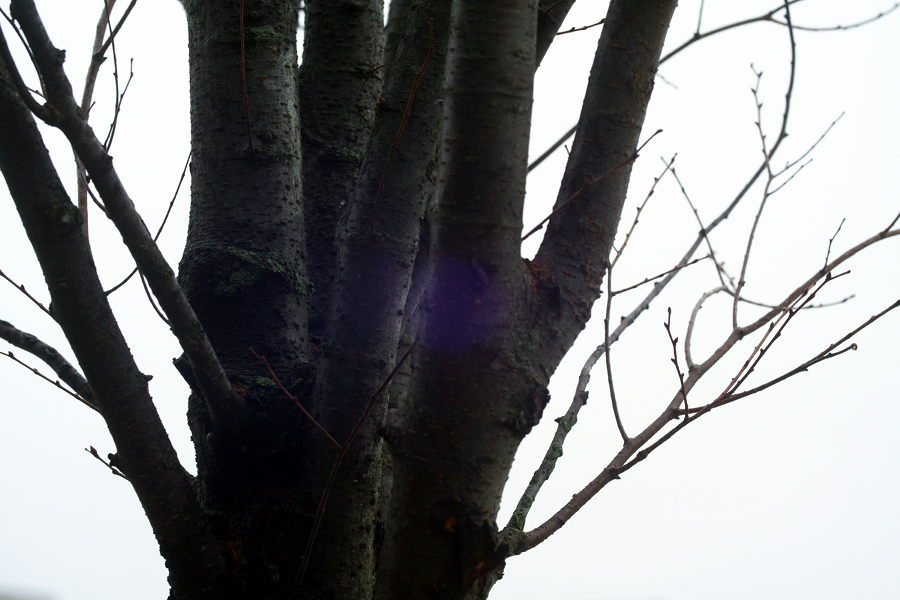Hi there,
I have a Voigtlander 28mm f3.5 LTM, today I tried it on Sony A7II and overall I liked what I saw except the purple fringes. I did try to remove them using Lightroom, but once the purple ones are gone, the green ones remain. Here are some examples. The first one is just Raw conversion without any treatment, then the second one is done with Lightroom. Let me know if you have any thoughts. I am fully aware that rangefinder lenses are tricky on Sony sensors.
To begin with, the first one looks much better to me than the second -- there's a lot of detail lost in the second on the flowers, etc.
Beyond that, that doesn't really look like CA, but some PF. That's typically due to NIR sensitivity + a lens that doesn't have NIR well corrected when visible light is in focus. The A7II isn't a BSI sensor, and it often shows a bit more PF than, for example, my A7RII, but this is really just a lens issue being revealed by the sensor. Adding a stronger NIR-blocking filter will usually take care of PF, but not always, because some lenses also have contributions to this effect in NUV.
Basically, the best "credible repair" is something along the lines of sampling the PF color and then desaturating it or shifting the hue to match the thing showing the fringing (in this case, the leaves). You need to sample the color because the color renedring of NIR is camera model dependent; it usually looks purple simply because the green filter in the Bayer CFA blocks more NIR than red or blue do. In any case, you shouldn't be messing with the color balance overall to correct this.
Do you really think it is NIR that typically causes PF?
Not just something I think; I've repeatedly measured it experimentally and corrected it using multispectral processing. I've never published a paper on PF per se, but, for example, I did publish
Multispectral, high dynamic range, time domain continuous imaging at EI 2018. I actually had prepared to do extensive PF measurements and had planned to write a research paper about PF in Summer 2020, but instead spent most of that time on a COVID-19 related project... so perhaps next Summer?
In my experience it has usually been NUV.
That
can happen, all poorly-corrected bands contribute, but CMOS sensors have inherently low sensitivity and optical glass in lenses blocks most NUV. From my measurements on about a dozen different cameras, NUV is usually at least an order of magnitude less significant than NIR in PF (so-called Purple Fringe).
Almost all cameras from the past five to ten years have very strong NIR blocking filters unlike some of the earlier DSLRs. There is next to no NIR leakage - so much so that even an R72 results in extremely long exposures on most DSLRs.
Actually, the natural sensitivity to NIR is often higher than to visible light. Typical NIR blocking filters reduce that by an impressive 7 stops or so -- which would be fine if we didn't have cameras with 15-stop DR. This is why true PF only shows with rather dark objects against a bright NIR source. Purplish haze with significant NUV can come from atmospheric phenomena (that's what UV and Skylight filters are intended to reduce) -- but that's color tinting the scene, not the same as PF caused by lens aberrations like SA and CA.
However there are plenty that pass NUV out to comparatively short wavelengths - Sony actually being one of the worst offenders. So if I see PF on a Sony I’d tend to point my finger at the NUV end of the spectrum rather than the NIR end.
In the four cases I’ve tried filtering for PF every time it has been the NUV end that causes it and long pass filtering at between 400nm and 440nm has reduced or eliminated it. I’d be interested in exploring a case that is caused by NIR leakage if you know of a good example.
Well, I don't know what you've been seeing, but if the PF looks purple (magenta), it isn't NUV. Take a look at the spectral response curves at
https://maxmax.com/faq/camera-tech/spectral-response . In fact, 450nm is the standard reference wavelength for Blue in lens design, and UVA is 315nm-400nm (with 375nm as a typical cutoff for UV sensitivity becoming negligible).
400-450nm would look blue for pretty much all cameras... assuming a decent amount of it made it through your lens, which is not true for many lenses: quartz optics can pass UV shorter than 350nm, and a single uncoated glass element might pass 75% of UVA in sunlight, but multiple coated elements usually effectively block UVA, especially wide open. In fact, many lenses barely pass any blue light wide open -- which is why you'll often see a color shift toward blue upon stopping down.
Aside from that, most filters don't have very clean cutoffs. Of course, there's no such thing as a "long pass filtering at between 400nm and 440nm" -- I assume you mean a long-pass filter that passes significantly less light shorter than 450nm. However, I'd guess that your filter is actually also cutting stuff around 800nm -- many UV filters do. I have a set of 10nm narrow bandpass filters for multispectral imaging, and I've
never seen the bulk of PF in a test image at 440nm or shorter wavelengths.
In any case, if your filter works with your lens and body, good for you! Just be aware that NIR is rarely the main villain behind PF.































